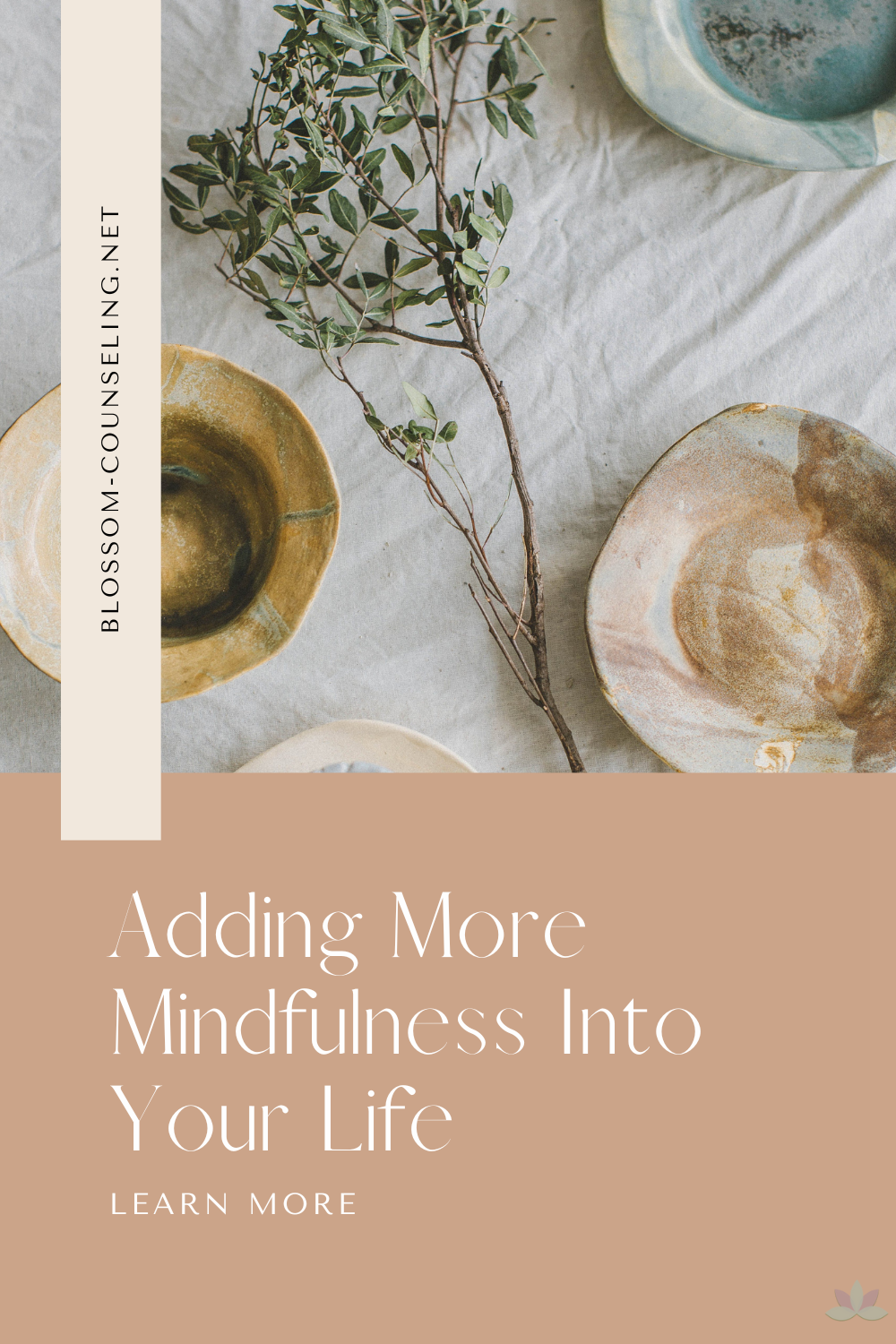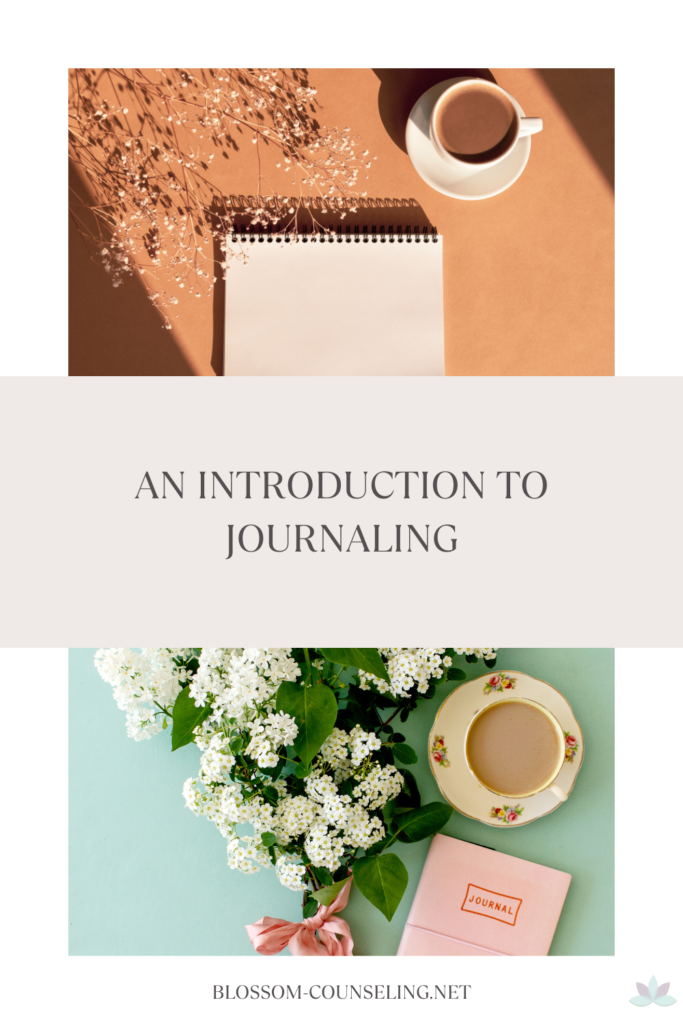
Let’s talk about mindfulness. When I ask a new client if they’ve heard of mindfulness, a common answer I get is, “I’ve heard of it, but what exactly is it?”
By definition, Mindfulness is the basic human ability to be fully present, aware of where we are and what we’re doing, and not overly reactive or overwhelmed by what’s going on around us. It’s a state of active, open attention on the present moment. When you’re mindful, you carefully observe your thoughts and feelings without judging them, or labeling them as good or bad. Instead of letting your life pass you by, mindfulness means living in the moment and awakening to your current experience, rather than dwelling on the past or anticipating the future.
So how can one be mindful?
Step one is to understand what’s meant by mindfulness: It’s about drawing our attention to the present moment in a curious and nonjudgmental way. Mindfulness teaches us to notice our thoughts and feelings when they drift to the past, stumble into the future, or begin to fill us with worry, regret, or numbness that distracts from what is going on right in front of us. Every time we can step away from our raising thoughts and emotions and focus on the present, we have a better chance at being our happy and calm self.
The best part? We can’t fail! When we get distracted and lose our focus on the present moment, we have an opportunity to pull back our attention and practice mindfulness. But we have to notice when our minds wander in the first place for all of this to work.
The best strategy to get better at noticing when you are leaving the present moment is to start practicing mindfulness in small ways as often as you can.
Tips to get started
-
-
- Do it when it’s easy. Most of the people I work with only become interested in mindfulness as a way to combat stress of difficult emotions. While that is a great idea, trying to start mindfulness in the middle of a crisis is a lot like trying to drive a car if you’ve never done it before- it will be stressful! Start by focusing on pleasant moments (e.g. that first sip of coffee in the morning, reuniting with a loved one after a long day, that endorphin filled post workout walk or drive home). You’ll be ready to manage the harder stuff when life’s challenges come your way.
- Pay attention to something you do every day. A great way to start is to pick one or two activities you do every day – such as drinking coffee, driving to work, or reading a book to your kids at bedtime – and get in the habit of paying attention to what you’re doing. Your mind will wander, possibly within a few seconds, but don’t sweat it. Just bring your attention back to your drive to work, the coffee, or the book.
- Take a breath whenever you can. Breathing is a key mindfulness practice because it is something we always do out of necessity, and it’s also a good way to bring our awareness back to the here and now. Taking three or four deep breaths (and paying attention to them) at any given moment can help you calm down and focus. (Learn about square breathing below!) Often, we start overthinking, which leads to thoughts like, “I’m not good enough.” A thought like this can cause negative feelings, which can lead to negative thoughts again. In this way, we can get caught in a cycle of thinking and feeling for a very long time. This is an example of how we sometimes easily get lost in worrying or ruminating about the past.
- Focus on your physical self. Sit down and notice how the chair you are sitting in feels under your body. Notice the different points of pressure where you bottom and lower back touch the chair in different spots. Put your hands flat on the counter , and notice how the hard, cool surface feels. Keep a soft, smooth stone handy and notice its weight as you hold it in your hand and run your fingers across it. These and similar actions will bring your awareness into the present.
-
You will notice that the more moments of mindfulness you practice on a regular basis, the easier and more instinctual it will become. As time goes on you will notice that you can slow down crucial moments in your day to improve their outcomes whether its an annoying work meeting or an upset child.
Activities to try that use mindfulness
Taking a daily vacation: Do you feel too busy in day to day life to enjoy things? This exercise is for you! Why? Research has shown that, rather than their intensity, the frequency of positive emotions and feelings is a stronger predictor of our overall level of happiness. Meaning that it’s better to increase the number of positive experiences, than it is to intensify them.
This exercise does just that. It’s called “Taking a Daily Vacation”:
You’re going to choose a different vacation every day. For example, going for a walk, chatting with a friend, having a hot bath, watching the sunrise while sipping on tea. The only limit is your imagination. Just choose something you enjoy doing.
Before you actually start, remember, your daily vacation is a time to relax. So set aside your worries and fears for a while.
During the daily vacation, try to be present and experience what is happening. Notice the sensations. How are you feeling? What positive emotions are you experiencing? Take a mental note of them.
After your daily vacation remember to plan ahead for the next day; what will tomorrow’s daily vacation be? Look forward to it!
Everyday, before you go to bed, take at least five minutes to remember the positive emotions that you savored during the day? How do you feel right now?
Square breathing: An easy way to focus on your breathing is to try square breathing.
Breathe in slowly through your nose while counting to 4.
Hold your breath while counting to 4.
Exhale while counting to 4.
Repeat 4 times.
This should feel good! Square breathing allows you to get more air into your body, reducing tension in your muscles, and clearing your mind. You will trigger your natural response to calm down, and counting to 4 only allows you to think about the number 4, not what you were worried about.
Empirically supported benefits of mindfulness include: Stress reduction , Anxiety reduction, Focus, Reduced rumination. Boosts to working memory, Less emotional reactivity.
Promotes: Empathy, compassion, and a better quality of life
So, in conclusion, how do you remember to be mindful? Try to recognize how your mind feels and then make an intention to carry that feeling into the rest of your day. Some people find it helpful to form a clear idea of what they are going to do next — maybe take a shower or get a cup of coffee — and perform their next task with the same level of awareness they experienced. Look for opportunities throughout your day in which to recognize the space and mindfulness you experienced during your practice.
Bonus! Here are five of our favorite free apps for practicing mindfulness:
- Colorfy (iOS and Android): Take advantage of mindful coloring no matter where you are. It works offline, too!
- Personal Zen (iOS): A game that reduces your anxiety while you play!
- Happify (iOS and Android): Overcome stress and negative emotions. Build resilience. Complete a few activities each week.
- Aura (iOS and Android): A collection of three-minute meditations that can be customized to your mood. Track your emotions and meditations overtime to create a personalized program. Also sends reminders to take deep breaths and record things you’re grateful for
|
|


